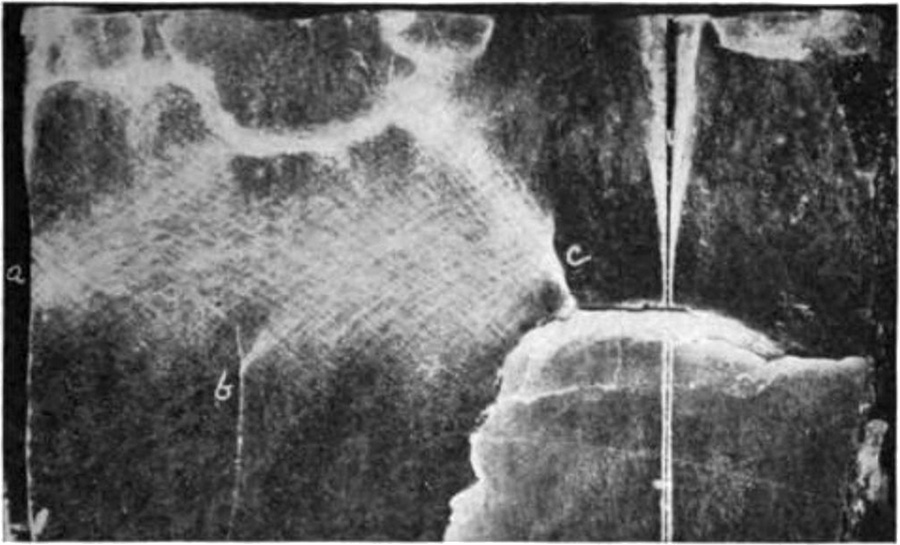the better results


*
Figs. 9 and 10 —
(both captioned) Photograph of a block of paraffin after compression. ×1.4
(levels 20 1.00 255)
Pearl (Gertrude) Sheldon (1885-1966). “Some Observations and Experiments on Joint Planes.” II. Experimental Work; Deductions. The Journal of Geology 20 (1912) : 164-183
Harvard copy, digitized July 26, 2007
JSTOR copy, opens to same images, at archive.org
—
“Instead of beeswax and resin, mixtures of paraffin and resin were used in the experiments... The better results seemed to be connected with lack of uniformity in the material. Results were better on the less regular surfaces and on material so recently cooled that it probably was not equally hard throughout.”
“In size the blocks used were from two or three to eight or ten centimeters in length and breadth and from less than a centimeter to three centimeters in depth... The varying conditions made it possible to trace cause and effect, and, since several scores of blocks were compressed and each showed different effects in its different parts, the results may be taken as general for the given material and given conditions.”
165-166
—
Sheldon’s work on fractures and joints would have great impact on the oil and gas industry.* She was an assistant and lecturer in paleontology at Cornell in the 1920s, and wrote the volume Atlantic Slope Arcas in Paleaontographica Americana (1916).
Part I of the same paper (Introduction; Observational Work) in the same volume 20 of The Journal of Geology (1912) : 53-79
JSTOR copy at archive.org
tags:
models; paraffin
Pearl G. Sheldon, “Some Observations and Experiments on Joint Planes” (1912)